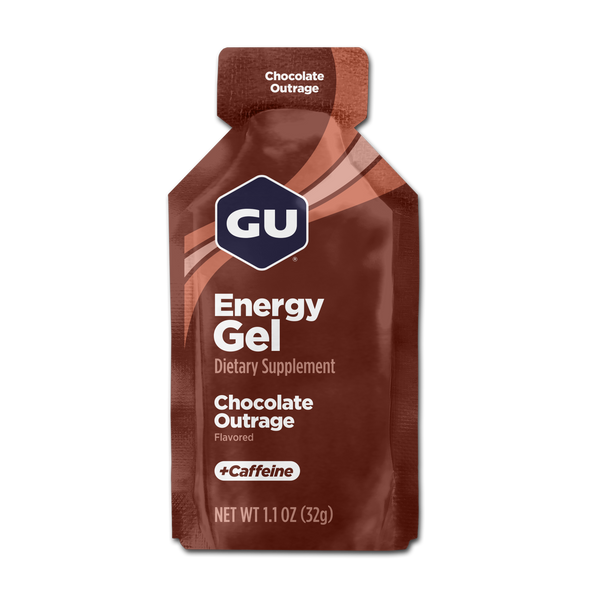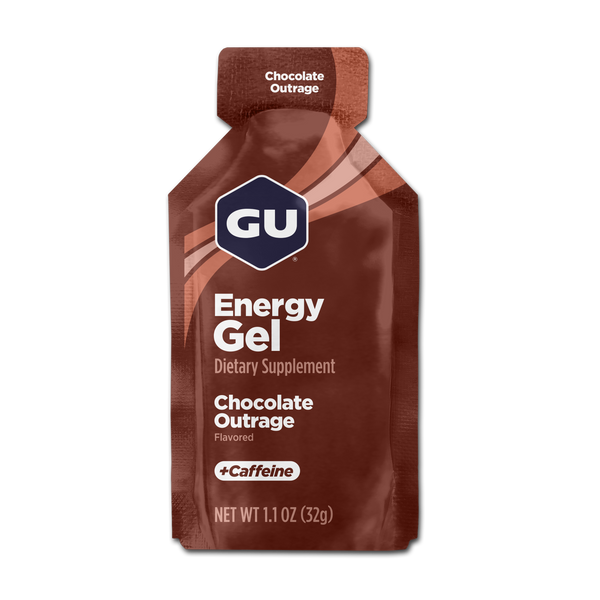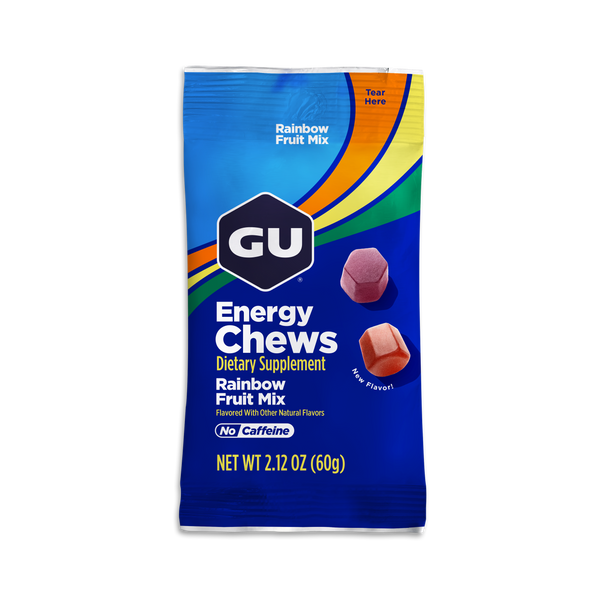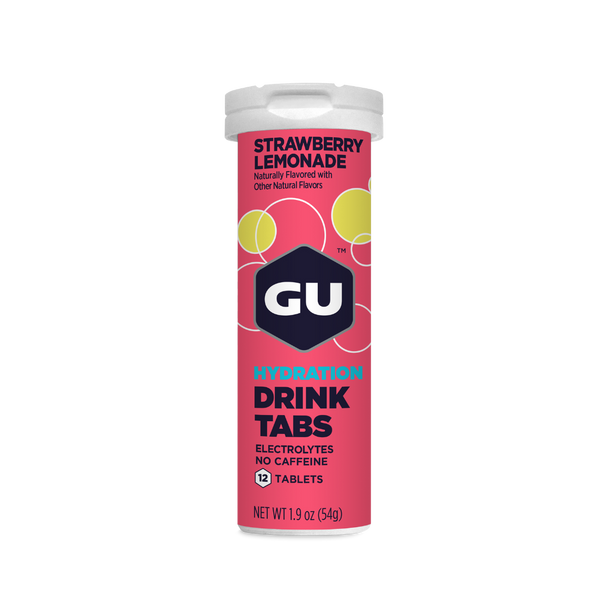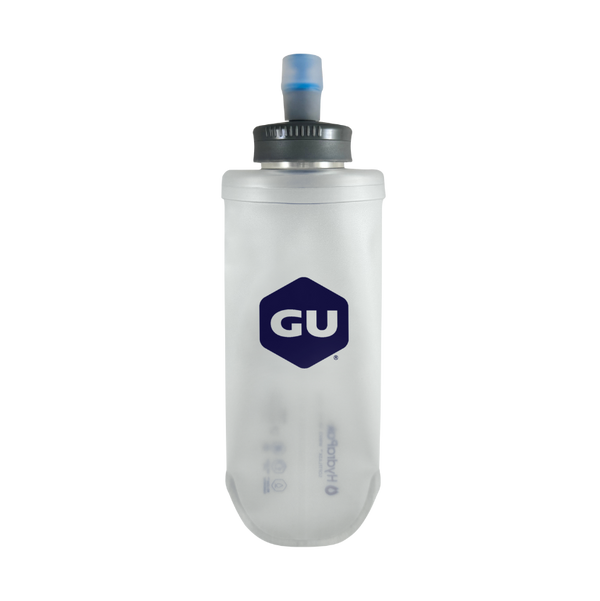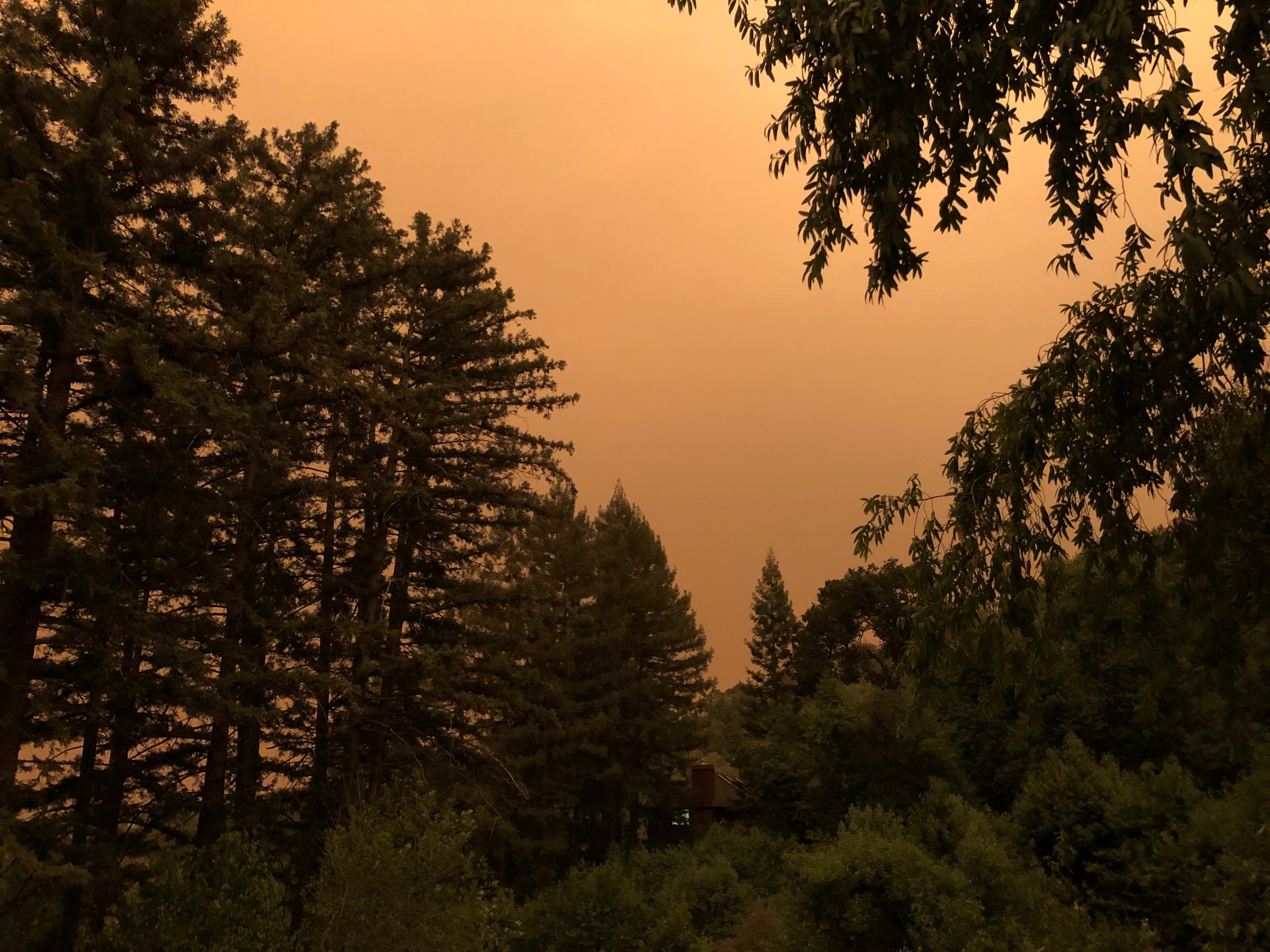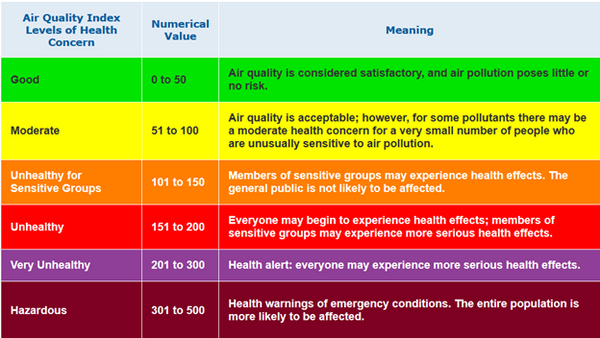The Air Quality Index Dilemma: Is It Safe to Exercise?
If you’ve looked out upon the horizon recently and lamented over a hazy hue to the sky, you are not alone. For those of us living in the Western half of the country, particularly California, Washington, Oregon, Nevada, Colorado, and Wyoming, the reality of a prolonged wildfire season has changed the way we live and exercise during the summer and fall months. Air quality concerns, fueled largely by wildfire smoke, are at the forefront of people’s minds when the tradeoff of exercising versus staying indoors becomes a daily dilemma. With the constant barrage of smoke and haze, many of us wanted to know, when is it safe to exercise outdoors, and when is it best to stay inside instead?
AIR QUALITY IS A BIG DEAL IF YOU EXERCISE OUTSIDE
When you exercise, your body uses more oxygen and produces more carbon dioxide. To meet this demand, your breathing rate increases from a resting average of about 15 breaths per minute (~12 liters of air) to somewhere closer to 40–60 breaths per minute (~100 liters of air) during exercise, according to the European Lung Association. Breathing in a greater volume of inspired air introduces more pollutants into your airways, namely particulate matter. Not to mention, many of us transition to mouth breathing during exercise, bypassing the fine-tuned filtration mechanisms of the nasal passageway, further increasing the amount of particulate matter inhaled with each breath.
WHAT IS PARTICULATE MATTER?
Particulate matter—also called particle pollution—is a mixture of solid particles and liquid droplets found in the air. Some particles, such as dust, dirt, or smoke, are large enough to see with the naked eye. Others are so small they can only be detected using a microscope. Particulate matter (PM) is typically classified as:
- PM10: Inhalable particles, with diameters that are generally 10 micrometers and smaller; and
- PM2.5: Fine inhalable particles, with diameters that are generally 2.5 micrometers and smaller.
To put it all in perspective, the average human hair is about 70 micrometers in diameter – making it 30 times larger than the largest fine particles.
POTENTIALLY HARMFUL HEALTH EFFECTS OF PARTICULATE MATTER
Particulate matter less than 10 micrometers in diameter can get deep into your lungs and may even find its way into your bloodstream. Of these, fine particles less than 2.5 micrometers in diameter pose the greatest risk to health. Fine particles are the main cause of reduced visibility (haze) observed in many parts of the Western US, and is the predominant form produced during wildfires. These microscopic particles get into your eyes, nose, and respiratory system, where they can cause symptoms such as burning eyes, sneezing, sore throat, coughing and wheezing, and illnesses such as bronchitis. Furthermore, particle pollution from wildfire smoke can impair your immune system, making you prone to new or more severe respiratory infections, including SARS-CoV-2, the virus that causes COVID-19.
EFFECTS ON EXERCISE
Exposure to particulate matter before exercise is associated with alterations in cardiac rhythm (ST segment depression) upon exertion. This holds true even with short-term PM exposure (i.e., 1-4 hours’ exposure in the previous 24 h) before exercise. As such, it might be a good idea to limit exposure as much as possible the days prior to any important event or key workout.
Particle pollution also impacts the cardiovascular system by initiating a systemic inflammatory response. In lab studies, short-term exposure to high levels of PM2.5 resulted in platelet activation, a form of inflammatory response, during exercise but not during rest, indicating that exercise may augment the effects of particulate matter exposure.
Finally, particulate matter exposure can also impair aerobic performance. Experimental studies have revealed that short-term exposure to high levels of PM during exercise impairs maximal accumulated work on a 6-minute, all out cycling test.
GREATER RISKS FOR SOME GROUPS
While it’s always smart to pay attention to air quality where you live, some folks may be at greater risk than others from the harmful effects of particle pollution. They include:
- People with cardiovascular disease
- People with lung disease, including asthma and COPD
- Children and adolescents
- Older adults
- Those with obesity or diabetes may also be at increased risk
- Women who are pregnant or nursing may also want to take extra precautions to protect the health of their babies
GUIDELINES FOR EXERCISING OUTDOORS IN POOR AIR QUALITY
The Environmental Protection Agency created a color-coded, six-tier Air Quality Index (AQI) to assist in making an informed health risk assessment based on current air quality conditions. Generally speaking, the numbers correspond to the level of ambient air pollution present on a scale from zero to 500, with higher values indicating unhealthy air quality, as follows:
- Good (0-50): Air quality is good. It’s safe to exercise outdoors.
- Moderate (51-100): Air quality is acceptable. Raised levels of pollutants may affect your breathing if you exercise outdoors, especially if you have asthma or allergies. Unusually sensitive people should consider reducing prolonged or heavy exertion.
- Unhealthy for Sensitive Groups (101-150): Pollutant concentrations may affect sensitive groups, especially those with lung or heart problems. Consider indoor exercise, or limit prolonged or heavy outdoor activity to reduce exposure to pollution.
- Unhealthy (151-200): Pollutant concentrations can cause health problems for everyone. DO NOT exercise outdoors.
- Very Unhealthy/Hazardous (201-500): Air quality is bad enough to warrant health alerts. Stay indoors with windows closed or leave the area until air quality improves.
FIND THE AIR QUALITY NEAR YOU
The NowCast AQI is updated hourly and can be accessed for your specific location by going to the official AirNow.gov website. The Fire and Smoke map can be particularly helpful in understanding where smoke is coming from and how it might impact your location. The forecast feature is great for making training plans based on where smoke plumes may be headed. Of course, common sense dictates that if it looks or smells smoky outside, it might not be the best time for a run or ride. When in doubt, it’s best to check current conditions before you head out the door.

Another real-time AQI monitoring option is PurpleAir, which relies on citizen scientists using their sensors, along with permanent AQI monitors to deliver local information. AirNow also sources data from the PurpleAir sensors in its own AQI assessments.

TIPS FOR MAINTAINING YOUR FITNESS IN POOR AIR QUALITY
- Consider indoor activity opportunities like going to the gym, walking laps at the mall, or working out along with an exercise app, on a stationary bike trainer, or doing bodyweight resistance training.
- Indoor HIIT workouts can be a time and space effective way to maintain aerobic fitness, while yoga or flexibility training, foam rolling, and strength training can help improve all around durability.
- If you do go outside when the AQI is elevated (>50), keep activity short (less than an hour) and consider limiting intensity to whatever you can maintain with nasal breathing only, which improves air particle filtration.
- Exercise earlier in the day. Particle pollution and ozone tend to accumulate throughout the day, making AQI values generally worse in the late afternoon.
- It is important to note that wearing a fabric or surgical mask during exercise does not provide protection from particulate matter. N95 or KN95 respirator masks may effectively filter out particulate matter, but this is highly dependent on the quality of the fit (nose and mouth covered, no gaps) and may limit your ability (and comfort) to engage in heavy exertion.
- limit your ability (and comfort) to engage in heavy exertion.

THE TAKE HOME MESSAGE
It’s an unfortunate fact that many of us have experienced firsthand the negative impact of wildfire smoke and other sources of particle pollution on our daily lives. The best thing to do is limit prolonged exposure to particle pollution, especially when the AQI gets above 150. Knowing the current air quality conditions is essential. Use the resources below to get the facts before you head out the door, and always use your best judgement. If it smells strongly of smoke or looks ominous outside, take a day to train inside. Or, do some of the things you’ve been putting off for far too long, like cleaning your fridge out (come on, no one’s really going to eat those week-old leftovers), organizing your closet, or stretching.
FREQUENTLY ASKED QUESTIONS
Q: Does air quality improve at night?
A: The AQI can sometimes improve at night, but this is not guaranteed. Below are some factors to consider that can affect nighttime air quality:
- Temperature and Atmospheric Conditions: Cooler temperatures at night can lead to temperature inversions, trapping pollutants close to the ground and potentially worsening air quality.
- Reduced Activities: There is typically less traffic and fewer industrial activities at night, which can potentially decrease pollutant emissions. However, if these pollutants are trapped by temperature inversions, the overall air quality might not improve significantly.
- Chemical Reactions: Certain pollutants like ozone, which are influenced by sunlight, may decrease after sunset as their formation slows down without sunlight.
Q: What precautions can be taken to exercise safely on poor air quality days?
A: On days with poor air quality, people should think about exercising indoors, especially if the AQI exceeds 100. If outdoor workouts are unavoidable, it's best to exercise early in the morning when air quality tends to be better and avoid areas with heavy traffic to minimize exposure to pollutants.
Q: How does poor air quality affect exercise?
A: Individuals exercising in poor air quality can be at risk to health issues such as impaired lung function, increased asthma symptoms, and cardiovascular stress. Especially for athletes, exercising in environments with high levels of pollutants, like smoke or ozone, can significantly affect performance and health.

